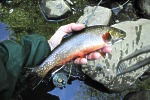CATHEDRAL STATE PARK
Cathedral State Park consists of 133 acres, located on Route 50, in Preston County in Northeastern, West Virginia. The region is hilly to mountainous, but the park is located on rather gently sloping ground with an elevation varying from 2460 to 2620 feet. Over 170 species of vascular flora have been cataloged; to include 9 species of fern, 3 club moss, over 30 tree species (17 broad leaf) and over 50 species of wildflowers.
Cathedral State Park is an ancient hemlock forest of majestic proportions, and one of the last living commemorations of the vast virgin hemlock forest which once flourished in the Appalachian highlands. Trees up to 90 feet in height and 21 feet in circumference form cloisters in the park. Throughout the woods, eastern hemlock is the dominant species.
The woods were preserved because of the love each owner had for this unique area. The land was eventually purchased, in 1922 by Mr. Branson Haas. Mr. Haas was a workman for the Brookside Hotel, which stood where the park superintendent's residence now stands. He sold the forest to the State of West Virginia in 1942, with the provision that it remain untouched by ax or saw. Mr. Haas served as caretaker until his death. On October 6, 1966, Cathedral State Park was entered in the National Registry for Natural Historical Landmarks, as "an area that possesses exceptional value in illustrating the natural history of the United States." It is of note this is the only stand of mixed virgin timber left in West Virginia. Also the largest hemlock tree in the state is located within the park.
On May 20, 1983, the Society of American Foresters recognized Cathedral in its National Natural Areas Program. As an "outstanding example of vegetative community in a near natural condition"..."with its associated biotic, edaphic, geologic and aquatic features dedicated for scientific and educational purposes". The area was registered because it is "maintained in the natural condition, by allowing physical and biological processes to operate, usually without direct human intervention."


